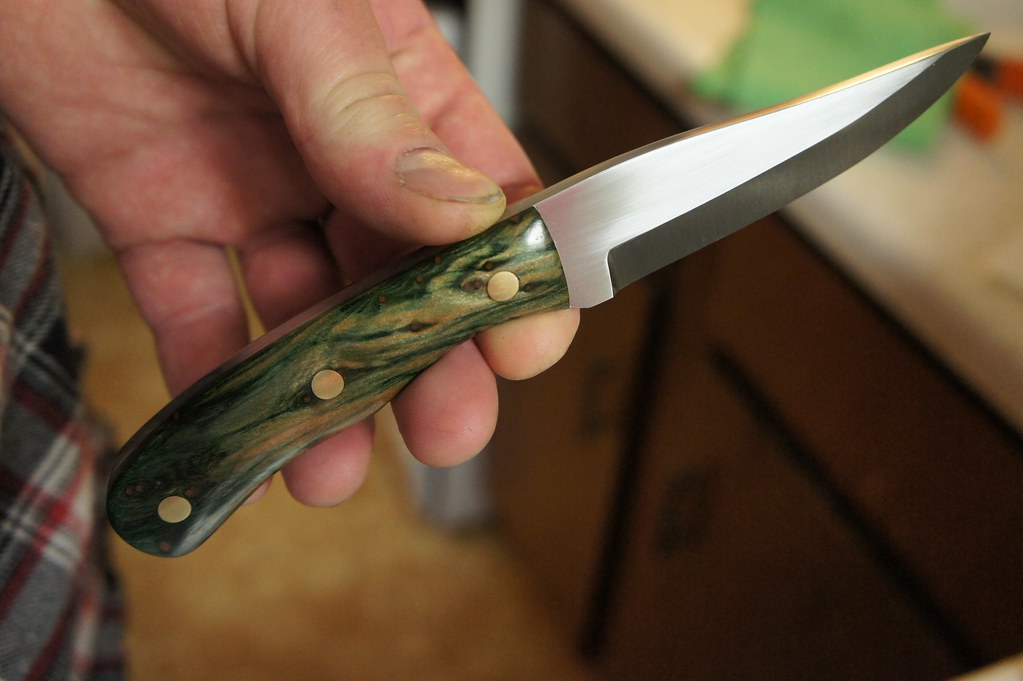Here is the second knife that I tru oiled. I believe it has 6 or 7 coats of tru oil on it. Pics are before buffing, as the last coat of tru oil was only put on about 2 hours ago. I followed the same process I was led to on the first knife here (minus the wet sanding with tru oil). Others did not recommend wet sanding with tru oil and still achieve great, quick results.
With this knife:
I sanded to 400 grit.
Then added normal super glue (not gel) to the handle. I did not use a debonder.
Stepped up in grits from there to 2000 grit.
Applied 7 thin coats of tru oil and wiped then off immediately after application.
Let dry for two hours in a
dry area.
Lightly sanded with 0000 steel wool.
and applied the rest of the tru oil coats.
I will wait 2 or 3 days and then lightly buff with jewelers rouge and then paste wax.
I expect the same results as the bowie / clip point knife above.
I will also probably re buff more aggressively after a month or so.
So again, thanks for all the help. Any clarification on other causes of gummy black tru oil when wet sanding would be nice to know. Purple sand paper also caused the black goo. I would like to try this again, if it can improve my results or efficiency.
At this point, I am able to go from raw bar stock, to a finished product in about 24 hours or so using my beat up craftsman 1 x42 and working in an apartment. I would still welcome anything that can make this process more efficient.
NOTE: This is before buffing.


